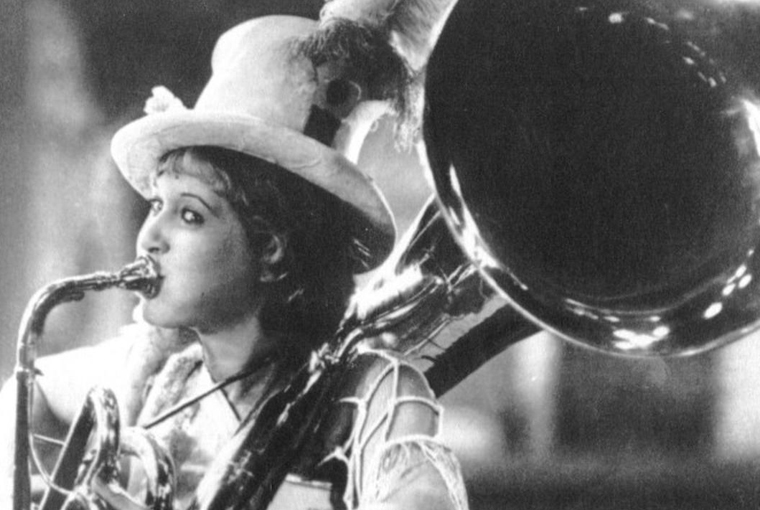
Nearly 100 years ago, as silent film actors were still hamming it up in film studios around the world, avant-garde film theorists were already plotting their demise. Writing collectively in August 1928, S.M. Eisenstein, V.I. Pudovkin and G.V. Alexandrov weighed in on the new technology that was sound film. In that short text, they assert that this technological import from America would either lull us into complacency, or serve as a tool to awaken our minds and heighten the art of cinema. It was considered a way to unburden film of overly heavy inserts and acting. However, they also warn that a casual use of sound and music might create complacency among the viewing public.
The importance of sound in Russian cinema is manifest in the way that great filmmakers work in close collaboration with composers, formidable pairings in which each art form is valued individually: think of Prokofiev and Eisenstein’s shared work in the 1940s, the introduction of Shostakovich’s waltz in Mikhail Kalatozov’s First Echelon (1955), and Eduard Artemyev’s collaborations with different filmmakers including Tarkovsky, Konchalovsky and Mikhalkov.
One of the ways in which Russian film has struggled against the “automatic utilization” of sound that the trio around Eisenstein warn us of, is through the use of diegetic music wherein sound emanates from the story. Think of the giant choir in Ivan the Terrible, of Valery Gergiev’s orchestra in Sokurov’s Russian Ark, and of the seductive musical performances in the work of Kira Muratova. This embodiment of music reminds viewers that the joy derived from it is created by the people. Unlike Hollywood films, in which music is often deployed to highlight individual stars, musical creation in Russian cinema is mainly anchored in groups: orchestras, choirs and bands that populate the cinematic landscape. On the contrary, when (musical) sound is non-diegetic – coming from outside the frame – it often differs from what might seem to suit the image. Like our thoughts, sound does not necessarily follow a logical pattern. These “mismatches” are paths for the director to express ideas which do not rely purely on cinematography. By not taking sound and music for granted, the viewer’s mind is given space to roam freely and take delight in ever-renewing juxtapositions.
Soviet cinema’s recurring goal to be entertainment, but not mindless, is thus carried out largely through innovative use of sound and music. This tradition has continued throughout the twentieth century and has lived on to this day. Esteemed modern Russian filmmakers like Andrey Zvyagintsev and Kantemir Balagov follow this legacy, meticulously crafting their soundtracks in a way that keeps the viewer on alert.
***
We conclude our 2020 regional focus on Russia by bringing you a special issue on Russian and Soviet music. In it, Ira Österberg shares her reading of what is often considered the first Soviet musical, Jolly Fellows (1934), and discusses its American and Russian influences. Wolfgang Thiel also considers early Soviet musicals, providing an overview of the birth of this tradition. Tajik filmmaker and scholar Sharofat Arabova writes about the early musicals of Tajikistan, and explores how the Tajikfilm studio was both assisted and exploited in providing entertainment for the entire Soviet Union.
Sound scholar and artist Florian Hollerweger brings us a close analysis of Tarkovsky’s philosophy of sound in film, and explores how he worked with that ideal. Pantelis Lykoudis takes us further into Tarkovsky’s world by investigating the compositional strategies of his longtime collaborator Eduard Artemyev. Maxim Plokhih considers the various incarnations and portrayals of Viktor Tsoi from the hugely popular Russian band Kino. Alexey Izmalkov writes about four important Russian musicals released between 2008 an 2018 and the differing incarnations of their shared heroes. And finally, Rachel Stauffer visits the tradition of the New Year Film, focusing on Kryzhovnikov’s Best Day Ever, released in 2015.
Colette de Castro
Guest Editor




Leave a Comment